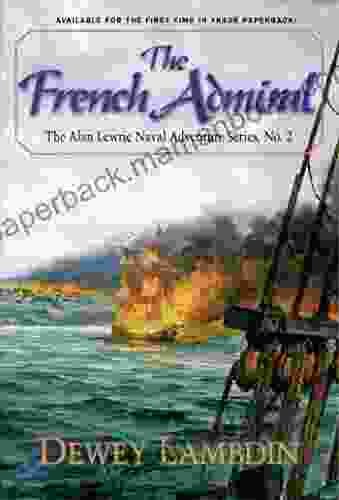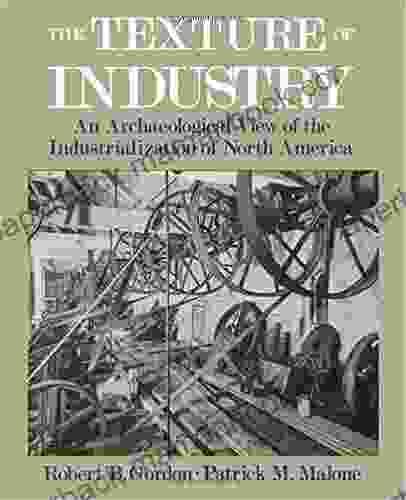An Archaeological View Of The Industrialization Of North America

The industrialization of North America was a complex process that unfolded over several centuries. It began with the arrival of European colonists in the 16th century and continued through the 19th and 20th centuries. During this time, North America underwent a dramatic transformation from a largely rural and agrarian society to an urban and industrial one.
Archaeological research has played a vital role in understanding the process of industrialization in North America. By excavating and studying the remains of factories, workshops, and other industrial sites, archaeologists have been able to gain a detailed understanding of the technologies, processes, and people involved in the industrial revolution.
5 out of 5
| Language | : | English |
| File size | : | 15486 KB |
| Text-to-Speech | : | Enabled |
| Word Wise | : | Enabled |
| Print length | : | 460 pages |
| Lending | : | Enabled |
This article provides an overview of the archaeological evidence for the industrialization of North America. It begins with a discussion of the early colonial period, when the first European factories were established in North America. It then discusses the growth of the industrial revolution in the 19th century, and concludes with a look at the impact of industrialization on the landscape and people of North America.
The Early Colonial Period
The first European factories in North America were established in the 16th century. These factories were typically small and produced a variety of goods, including textiles, metal tools, and glass. They were often located in urban areas, such as New York City, Philadelphia, and Boston.
Archaeological research has revealed that these early factories were often built on the remains of Native American villages. This suggests that the Europeans were taking advantage of the existing infrastructure and labor pool in these areas.
The early colonial period was also a time of significant technological innovation. New machines and processes were developed that made it possible to produce goods more efficiently and cheaply. This led to a rapid expansion of the industrial sector in North America.
The Growth Of The Industrial Revolution
The industrial revolution in North America began in the late 18th century. This period was characterized by the development of new technologies, such as the steam engine and the cotton gin. These technologies made it possible to produce goods on a much larger scale than ever before.
The growth of the industrial revolution led to a dramatic increase in the number of factories in North America. These factories were typically larger and more specialized than the factories of the colonial period. They were also located in a wider variety of areas, including rural areas and small towns.
Archaeological research has revealed that the industrial revolution had a significant impact on the landscape of North America. The construction of factories, railroads, and other industrial infrastructure led to the deforestation of large areas of land. It also led to the pollution of rivers and streams.
The industrial revolution also had a significant impact on the people of North America. The growth of the industrial sector led to the creation of new jobs, but it also led to the displacement of many workers. This led to social and economic problems, including poverty, crime, and unrest.
The Impact Of Industrialization
The industrialization of North America had a profound impact on the landscape and people of the continent. It led to the development of new technologies, the growth of cities, and the creation of new jobs. However, it also led to the deforestation of large areas of land, the pollution of rivers and streams, and the displacement of many workers.
The archaeological record provides a valuable window into the process of industrialization in North America. By studying the remains of factories, workshops, and other industrial sites, archaeologists have been able to gain a detailed understanding of the technologies, processes, and people involved in the industrial revolution.
This research has helped us to understand the impact of industrialization on the environment and on the people of North America. It has also helped us to appreciate the role that archaeology can play in understanding the past.
The industrialization of North America was a complex process that unfolded over several centuries. It began with the arrival of European colonists in the 16th century and continued through the 19th and 20th centuries. During this time, North America underwent a dramatic transformation from a largely rural and agrarian society to an urban and industrial one.
Archaeological research has played a vital role in understanding the process of industrialization in North America. By excavating and studying the remains of factories, workshops, and other industrial sites, archaeologists have been able to gain a detailed understanding of the technologies, processes, and people involved in the industrial revolution.
This research has helped us to understand the impact of industrialization on the environment and on the people of North America. It has also helped us to appreciate the role that archaeology can play in understanding the past.
5 out of 5
| Language | : | English |
| File size | : | 15486 KB |
| Text-to-Speech | : | Enabled |
| Word Wise | : | Enabled |
| Print length | : | 460 pages |
| Lending | : | Enabled |
Do you want to contribute by writing guest posts on this blog?
Please contact us and send us a resume of previous articles that you have written.
 Top Book
Top Book Novel
Novel Fiction
Fiction Nonfiction
Nonfiction Literature
Literature Paperback
Paperback Hardcover
Hardcover E-book
E-book Audiobook
Audiobook Bestseller
Bestseller Classic
Classic Mystery
Mystery Thriller
Thriller Romance
Romance Fantasy
Fantasy Science Fiction
Science Fiction Biography
Biography Memoir
Memoir Autobiography
Autobiography Poetry
Poetry Drama
Drama Historical Fiction
Historical Fiction Self-help
Self-help Young Adult
Young Adult Childrens Books
Childrens Books Graphic Novel
Graphic Novel Anthology
Anthology Series
Series Encyclopedia
Encyclopedia Reference
Reference Guidebook
Guidebook Textbook
Textbook Workbook
Workbook Journal
Journal Diary
Diary Manuscript
Manuscript Folio
Folio Pulp Fiction
Pulp Fiction Short Stories
Short Stories Fairy Tales
Fairy Tales Fables
Fables Mythology
Mythology Philosophy
Philosophy Religion
Religion Spirituality
Spirituality Essays
Essays Critique
Critique Commentary
Commentary Glossary
Glossary Bibliography
Bibliography Index
Index Table of Contents
Table of Contents Preface
Preface Introduction
Introduction Foreword
Foreword Afterword
Afterword Appendices
Appendices Annotations
Annotations Footnotes
Footnotes Epilogue
Epilogue Prologue
Prologue Maxim Dsouza
Maxim Dsouza Dewey Lambdin
Dewey Lambdin Costas Lapavitsas
Costas Lapavitsas Peter Zeihan
Peter Zeihan Ledys Angola
Ledys Angola Kristen Thrasher
Kristen Thrasher Fenella J Miller
Fenella J Miller Joanna Toye
Joanna Toye Bob Hartman
Bob Hartman Diana J Mason
Diana J Mason Goran Powell
Goran Powell Sara Rosett
Sara Rosett Kindle Edition
Kindle Edition Kenjiro Hata
Kenjiro Hata Charles Wing
Charles Wing Rebecca Minkoff
Rebecca Minkoff Roger Marshall
Roger Marshall Michael Mackison
Michael Mackison Larry Hama
Larry Hama E Pauline Johnson
E Pauline Johnson
Light bulbAdvertise smarter! Our strategic ad space ensures maximum exposure. Reserve your spot today!
 Adrian WardFollow ·12.3k
Adrian WardFollow ·12.3k Hank MitchellFollow ·10.2k
Hank MitchellFollow ·10.2k Tim ReedFollow ·19.6k
Tim ReedFollow ·19.6k Michael CrichtonFollow ·11k
Michael CrichtonFollow ·11k Vince HayesFollow ·17.2k
Vince HayesFollow ·17.2k Travis FosterFollow ·4.6k
Travis FosterFollow ·4.6k Brody PowellFollow ·17k
Brody PowellFollow ·17k Gus HayesFollow ·19.2k
Gus HayesFollow ·19.2k

 Jeremy Mitchell
Jeremy MitchellPlay We Now On Christmas Violin Christmas: A Heartfelt...
Play We Now On...

 Terry Bell
Terry BellTales from the Road: Confessions of an Atlanta Uber...
In the vibrant...

 Ervin Bell
Ervin BellThe French Admiral: A Gripping Naval Adventure with Alan...
In the vast expanse of...

 Henry David Thoreau
Henry David ThoreauCrochet Cozy Afghan Patterns: Crochet Weekend Afghan...
to Crochet...

 Orson Scott Card
Orson Scott CardAn Archaeological View Of The Industrialization Of North...
The industrialization of North America was a...

 Josh Carter
Josh CarterClipboard Christmas Skits by Tom Spence: A Festive...
A Christmas...
5 out of 5
| Language | : | English |
| File size | : | 15486 KB |
| Text-to-Speech | : | Enabled |
| Word Wise | : | Enabled |
| Print length | : | 460 pages |
| Lending | : | Enabled |











